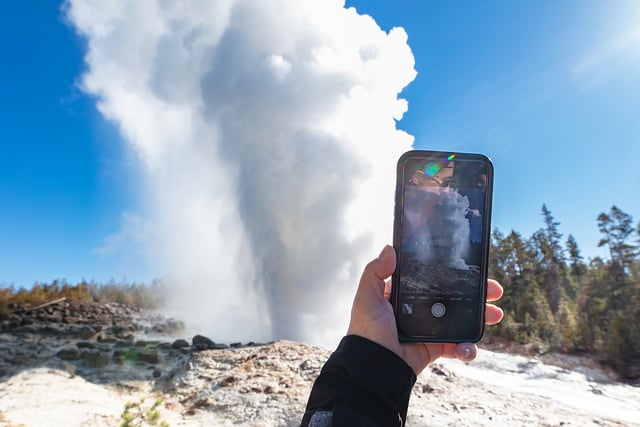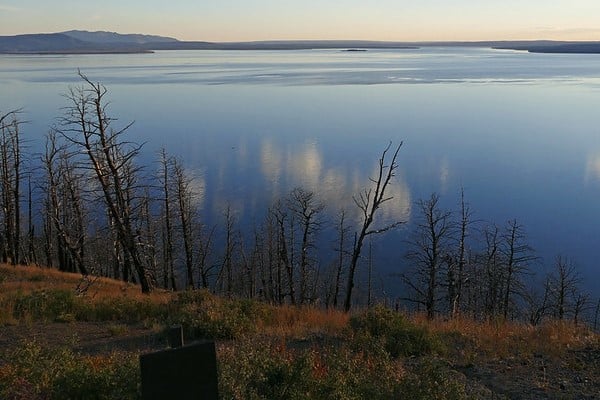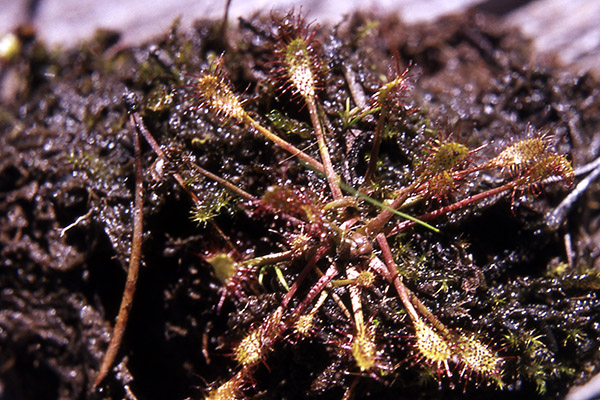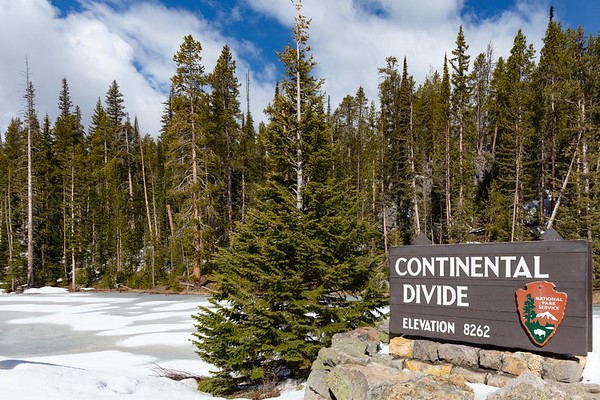Tales of the Unexplained and Unexpected
Unexplained and Unexpected
To the Native Americans and the early white explorers that visited Yellowstone, the entire area was an unexpected mystery the likes of which had never before been seen. Water erupting from the ground? Boiling mud pits? Stinking hot springs? Terraces made of minerals? When John Colter returned to St. Louis after leaving the Lewis & Clark expedition to explore this area by himself for a year, people didn’t believe the reports he brought back with him. They jokingly named what he described “Colter’s Hell.”
Of course, today Yellowstone’s geologic wonders — the national park contains more than 10,000 thermal features, about three-quarters of the total in the world — are well known and more than 4 million people travel to the national park every year to marvel at them. But the park is still full of unexpected finds and mysteries of nature. Here are some curious ones.

Steamboat Geyser: Nature at its Most Unpredictable
The eruptions of Steamboat Geyser, the world’s tallest active geyser, happen between four days and 50 years apart — without apparent rhyme or reason. Located in Norris Geyser Basin, Steamboat has been quite active since 2018. Prior to this date, its last eruption was in 2014. Between 2018 and September 28, 2021, the geyser has erupted 143 times, including a record 48 times in both 2019 and 2020. The eruptions are entirely erratic — between early July and early September 2021, the geyser didn’t erupt at all and it was feared Steamboat was returning to a period of dormancy. But then it erupted again September 11 and 26 — though scientists have no explanation for the geyser’s increase in activity.
A study published in January 2021 in the Proceedings of the National Academy of Sciences ruled out earthquakes and snowfall as causes, and didn’t have evidence supporting other causes. Mara Reid, the study’s lead author and a graduate student at the University of California, Berkeley, was quoted about the study in The New York Times: “We still can’t explain simple things about how [geysers] work. There’s just so much more to learn.”

Haunting Lake Music
What could be more striking than a singing lake? F.H. Bradley, a member of the 1872 Hayden Expedition that explored Yellowstone, was the first to write about a noise he heard at Yellowstone Lake: “While getting breakfast, we heard every few moments a curious sound, between a whistle and a hoarse whine, whose locality and character we could not at first determine.” In the 150 years since Bradley wrote those words, no one has been able to determine the source of the so-called “lake music.” But Bradley is far from the only person to have heard it.
At the turn of the 19th century, Captain Hiram Chittenden, an engineer in the park known for his precisely detailed and undramatic journals, had a similar experience. He wrote of “a most singular and interesting acoustic phenomenon of this region … strange and indefinable overhead sounds.” More recently, supervisory park ranger Kristine Brunsman reported in Thrillist.com hearing the sounds in winter. “I’ve been lucky enough to hear the lake sing for the last three winters. In 2018 and 2019, the sound was rather dull and often reminded me of corrugated metal flapping in the wind or maybe a far-off mechanical sound, like the engine of an airplane. In December 2020, I heard songs I’d never heard before — more ethereal notes, with whomps and whoops and whooos — akin to sonar pings or the call of a whale deep in the ocean. It gave me goosebumps.”
Maybe Chittenden was correct when he broke character to surmise about the source of the sound: “I like to imagine there’s a mystical creature that lives in the depths of Yellowstone Lake calling out a lonely song.”
Noxious Gas at Death Gulch and Wahb Springs
In 1899 Ernest Thompson-Seton wrote his seventh illustrated animal tale for children: The Biography of a Grizzly. The tale follows the life of a fictional grizzly bear named Wahb from his birth in the Upper Greybull River Valley to his death in Yellowstone’s Death Gulch. While the book is fiction, some parts come straight from nature, such as Wahb’s death from poisonous fumes in Death Gulch. About a decade earlier, in 1888, Walter H. Weed, a member of that year’s U.S. Geological Survey Expedition of the Yellowstone Region, noted he found six dead bears, an elk carcass, and numerous smaller animals dead in Death Gulch. Upon inspecting the carcasses, he was unable to find any external wounds and posited that “these animals had been asphyxiated by the irrespirable gas given off at the gulch.”
Less than a decade later, a journalist visited Death Gulch while writing a story for Appleton’s Popular Science Monthly and found eight bear carcasses, all also showing no evidence of violent deaths. The writer, like Weed, theorized, “there can be no question that death was occasioned by the gas,” and continued to explain that he himself suffered from a headache for several hours after leaving the gaseous gulch.
While there are no modern-day reports of animals dying from the gas in Death Gulch, the fumes in the area are known to be particularly pungent and strong. In the summer of 2008, Jeremy Johnston, the historian of Cody’s Buffalo Bill Center of the West, retraced the route Thompson-Seton’s Wahb traveled. Of the smell at Death Gulch, Johnston wrote, “at times the odor was so strong it nearly took our breath away.”
You can experience Death Gulch’s noxious fumes yourself by hiking up the Cache Creek Trail in the Lamar Valley. Death Gulch is on the opposite side of the river from the hiking trail, but you can still smell the gas. Just before you reach Death Gulch, look for a hot spring boiling up in the middle of Cache Creek. Its name is Wahb Springs, after Thompson-Seton’s imaginary bear.

Carnivorous Plants? Yes, Indeed
Yellowstone has a whopping 1,300 species of plants — but only two stand out for being carnivorous. That’s right, the bladderworts and sundews found in Yellowstone actually feed on prey.
According to a Yellowstone National Park blog post by park botanist Heidi Anderson, bladderworts have traps that are considered some of the most sophisticated in the plant world. Once prey like protozoa, water fleas, and mosquito larvae land on a bladderwort, it can snap shut in 1/100 of a second. The prey is then dissolved and its nutrients absorbed by digestive secretions. Sundews’ red leaves, on the other hand, have tiny tentacles that glisten with a mucilage that attracts and traps insects, and eventually kills them by suffocation and digests them. Wondering if the sundew you see is eating? You can tell by looking closely at the tentacles, which are curled inward when it’s feeding. When the plant is finished, the tentacles unfurl.
Bats, Bats, and More Bats
Did you know 13 species of bats live in Yellowstone and that they are key to the health of the park’s ecosystem? These nocturnal animals — the only mammal in the world capable of sustained, flapping flight — keep the park’s insect populations in check. (All 13 species of bats in Yellowstone are insectivores.) A single bat can consume 3,000 to 7,000 insects during just one night. A female nursing a pup might consume its body weight in insects each night. The little brown bat, which was first identified in 1904 at the park’s Lake Yellowstone Hotel, is the most common bat seen in the park. Look for bats at dawn and dusk in areas rich with insects.

Two-Faced Isa Lake
This sliver of a lake at 8,262 feet in elevation between West Thumb and Old Faithful is one of the only natural lakes in the world known to drain into two oceans … and it does this backwards! Throughout the year, the western end of Isa Lake flows into the Firehole River, which meanders east to the Missouri and Mississippi Rivers and eventually to the Gulf of Mexico and Atlantic Ocean. In late spring, when it’s swollen with snowmelt, the lake’s eastern end drains into Shoshone Lake, then to the Lewis, Snake, and Columbia Rivers on the way west to the Pacific. This lake was discovered and named in 1891 by Hiram M. Chittenden (the same Chittenden who described the lake music). Chittenden named the lake after Miss Isabel Jelke, a Cincinnati socialite. However, the relationship between Chittenden and Jelke is lost to history.
Written by: Dina Mishev
Dina Mishev is a freelance writer based in Jackson Hole, Wyo.
For A World of Unforgettable Experiences® available from Xanterra Travel Collection® and our sister companies, visit xanterra.com.
Want to experience Yellowstone in-depth? See what makes Yellowstone National Park a great place to work for a season or longer!